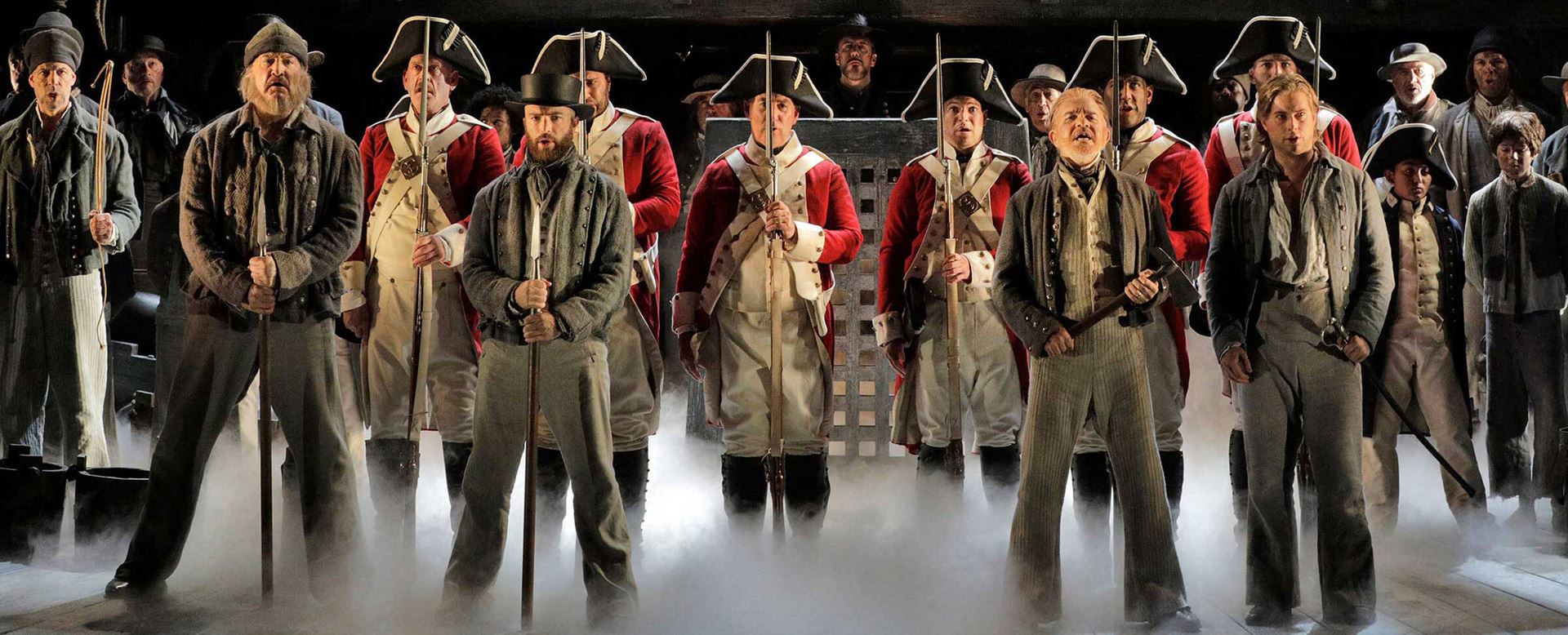
A Brief History of Opera
Quick answers: Born in Italy more than 400 years ago during the Renaissance, opera—a combination of vocal and orchestral music, drama, visual arts and dance—has been inspiring people for ages.
Who wrote the first opera
In Florence, a small group of artists, statesmen, writers and musicians known as the Florentine Camerata decided to recreate the storytelling of Greek drama through music. Enter Jacopo Peri (1561–1633), who composed Dafne (1597), which many consider to be the first opera. From that beginning, two types of opera began to emerge: opera seria, or stately, formal and dignified pieces to befit the royalty that attended and sponsored them, and opera buffa, or comedies.
By the Baroque era (1600–1750), opera had taken Europe by storm and was a spectacular, expensive affair full of florid arias and ornate stage sets with moving parts. One of the greatest composers of Italian Baroque opera was a German who lived most of his life in London—Georg Frideric Handel (1685–1759). This period also saw the rise of castrati—male singers who were castrated as boys to preserve their soprano voices. The few who survived and made it to the top were the singing stars of the 17th and 18th century. Today those roles are sung by countertenors, or by women.
Operas Meaning
Opera content began to change in the Classical period (1750–1830). This was brought about by the social movement known as the Enlightenment, with less elaborate musical forms and more realistic plots (read: fewer gods, more humans) and a reaction against excessive vocal display.
The ultimate Classical opera composer was Wolfgang Amadeus Mozart (1756–91). Take his The Marriage of Figaro (Le Nozze di Figaro), a farce where servants ultimately outwit their aristocratic masters, based on a play by French writer Beaumarchais. It’s fast, irreverent and funny, but also full of stunning music. Mozart was also a master of high drama, as seen in his masterpiece Don Giovanni.
History of Opera
Opera continued to flourish, and got bigger, louder and longer during the Romantic period (1830–1900). Grand opera was suddenly all the rage. One important style during this time was the Italian bel canto movement (literally meaning “beautiful singing”), which was all about vocal brilliance and ornamentation bolstered by a simpler harmonic structure.
Gioachino Rossini (1792–1868) had a particular talent for ebullient comedy and unforgettable melodies—like his The Barber of Seville (Il Barbiere di Siviglia). However, many bel canto composers enjoyed a good tragedy—often making their heroines go mad via a thwarted love affair. It was a good excuse to indulge in lengthy and elaborate vocal display. The most famous ‘mad scene’ occurs in Gaetano Donizetti’s (1797–1848) Lucia di Lammermoor, where the heroine, coerced into marriage, murders her husband on their wedding night and then spectacularly loses her mind.
The best-known opera of the 19th century—and possibly the most popular of all time—is French composer Georges Bizet’s (1838–75) Carmen. It’s for good reason—the story of a Gypsy woman who values her free-spirited life above all, and the soldier who becomes obsessed with her, is packed with catchy melodies.
The late 19th century was dominated by two giants of opera: Italian Giuseppe Verdi and German Richard Wagner, both born in 1813. Verdi, whose operas include Rigoletto, Il Trovatore and Aida wrote in a tuneful and dramatic style. Verdi understood the human voice and the internal processes behind the characters he created. Perhaps his most popular opera is La Traviata, which tells the story of Violetta, a beautiful courtesan who is fatally ill with tuberculosis.
Meanwhile, in Germany, Wagner singlehandedly changed the course of opera with his huge ambition and talent by introducing new ideas in harmony, the use of leitmotifs and expanded use of the orchestra and operatic structure. Probably his best-known music is his 15-hour, four-opera Ring cycle: Das Rheingold, Die Walküre, Siegfried and Götterdämmerung. Wagner was a significant influence on the music world, particularly for composers Gustav Mahler, Anton Bruckner, Jules Massenet and Richard Strauss—whose operas Salome and Der Rosenkavalier, characterized by their virtuosity in orchestral writing and tone color, are steeped in Wagner’s late-Romantic style.
The early 20th century was dominated by another Italian with a fluent gift for melody, Giacomo Puccini (1858–1924). He wrote hugely popular works in the Italian grand opera tradition (usually featuring the tragic death of the heroine) with a new emphasis on realism—known as verismo—including La Bohème, Tosca, Madama Butterfly and Turandot.
20th century politics clashed with art in the 1934 opera by Dmitri Shostakovich, Lady Macbeth of the Mtsensk District; so disturbingly, brilliantly dramatic it was condemned by the Soviet government. In the U.K., Benjamin Britten proved himself one of the masters of opera with his 1945 debut Peter Grimes. Set on the Suffolk coast, it’s the story of a difficult, outcast fisherman, his mistrustful neighbors and the sea that dominates their lives. Politics and opera come full circle with one of the most successful and engaging works of the late 20th century: John Adams’s Nixon in China (1987), based on Richard Nixon’s historic visit to China to meet Chairman Mao in 1972. Adams will present a new opera, Girls of the Golden West (2017).
It seems that as long as there is a story to tell and ideas to be aired, opera will flourish. It is, after all, simply a heightened, multi-sensory means of making sense of the painful, glorious, complicated truths about the human condition.


